Noticing the traction control light during driving on a slippery road isn’t concerning as it indicates your car maintaining traction on a slippery road. But what if you notice a traction control light while driving a straight road and feel it is hard to turn the car?
Can bad alignment cause traction control light to come on? Yes, bad alignment can trigger traction control light and ABS light as these directly connected to the traction control system. If so, you should notice other symptoms like rough steering wheel, uneven tire wear, or squealing tires.
If not, the TCS light may turn on due to poor road conditions, a bad steering rack, or a faulty wheel speed sensor.
Article Summary
- Can Bad Alignment cause Traction Control Light to come on?
- Some Common Bad alignment symptoms
- Can I Drive with the Traction Control Warning Light on?
- How to Fix a Traction Control Light?
- How to Reset a Traction Control Light
- The Common Causes of Traction Control Lights Staying on
- Does Traction Control Light Reduce Car’s Speed?
- FAQs
Can Bad Alignment cause Traction Control Light to come on?
Proper alignment is crucial for a vehicle for safer driving and faster turning. But bad alignment can make it hard to control the vehicle as it wears out the tire quickly and affect the car’s stability.
Bad alignment is very hazardous and can trigger the traction control light. The symptoms of bad alignments are car tend to pull one side, vibrating steering wheel, and squealing tires. If your car causes any of these issues, it can turn on the traction control light.
Bad alignment like unbalanced wheels can’t also prevent the vehicle from slipping and causing loss of traction which can activate the traction control light. Other signs like faulty suspension prevent tires from contact with the ground. In this case, the traction control light can come on. Overall, it’s fairly possible that a bad alignment can cause traction control light to come on.
Some Common Bad alignment symptoms
While proper wheel alignment is important for maintaining complete control of the vehicle while driving, bad alignment makes driving dangerous. So if you want to disappear the traction control light and make driving safe, look for these signs that must be solved:

The Car Tends to Pull One Side
A car should run straight even after taking the hands off the steering. But if the car tends to drift to one side while driving on a flat road, the alignment may require adjustment. However, how often the car swerve to one particular side depends on the misalignment’s severity.
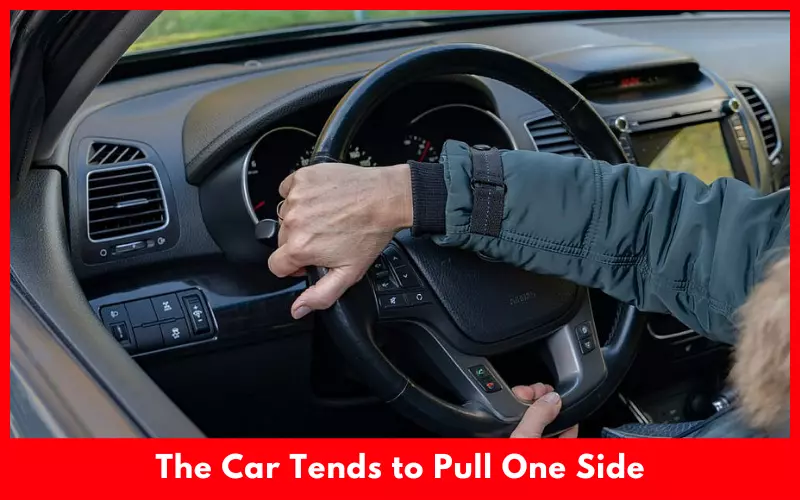
Rough Steering Wheel
The car’s steering wheel should also remain straight and center when you are driving on a straight road. But if the steering wheel is prone to move from the center, it’s a sign of bad alignment. To determine it, check the emblem in the steering wheel’s center.

If it remains straight when you drive flat, the steering wheel is centered. But if the emblem tilts off any direction, the steering wheel is off-centered and the wheel requires alignment.
Uneven Tire Wear
If you leave the misaligned tires for a long time, it can wear out the tires unevenly. Hence the tires won’t rotate properly and will rub at an angle continuously. It’ll also put excessive pressure on suspension and steering and make driving risky. To fix this problem, you must replace the tires immediately.
Vibrate in the Steering Wheel
Experiencing vibration in the steering wheel is a sign of unbalanced tires and bad alignment. If so, check the alignment of the tire to get proper control over the vehicle. However, the steering wheel can vibrate due to other problems as well that need deep inspection.
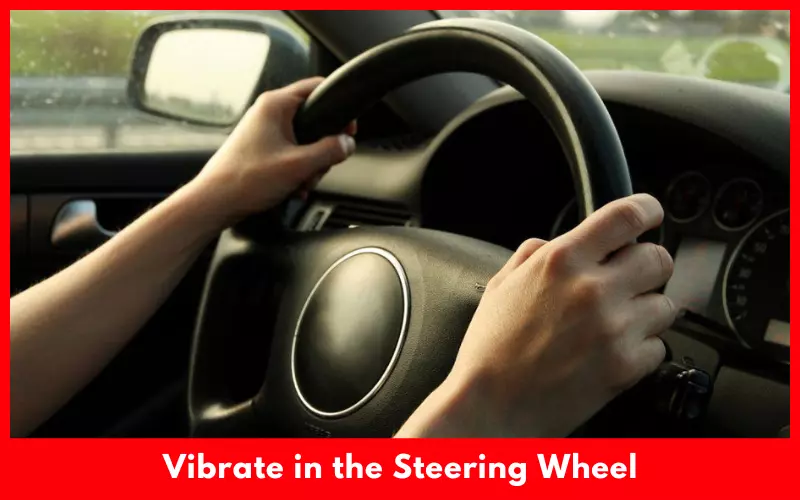
Squealing Tires
If your car’s tire wears out roughly due to bad alignment, it can start squealing while you are trying to accelerate or make turns. Damaged brake pads can also cause squealing.

Can I Drive with the Traction Control Warning Light on?
If only the TCS light activates while you are driving, don’t panic. Instead, take your vehicle to a safe place, turn off the car, and restart it. It should deactivate the TCS light. If the TCS light is still on, hire an expert mechanic and fix the system.
If you are far away from the auto repair shop, drive gently and don’t apply hard acceleration until you fix it. Otherwise applying hard acceleration can cause the wheel to slip and activate the ABS light. But you shouldn’t drive the car if the ABS and TCS lights come on with the brake warning light.
Its means, your car’s whole brake system is affected and you won’t be able to stop the car. To fix this issue, bring your car to the nearest auto repair shop. They should perform a diagnosis using a special scan tool to get the error code that activates the warning light. The mechanic will perform the next step according to the specific trouble code.
How to Fix a Traction Control Light?
If your car activates the traction control light due to bad alignment, work on those possible symptoms. Make sure all the tires are balanced and have enough pressure. The steering should also be straight and remain stable all the time.
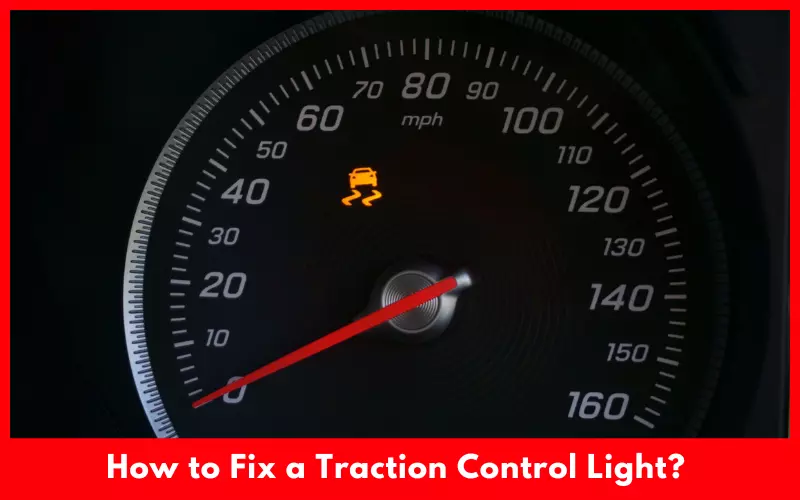
What if the Traction Control Light is still on after Adjusting the Alignment?
Reboot the onboard computer to disappear the glitch. To do so, remove the negative battery cables and leave the car for 15 minutes. Touch positive and negative wires together and then reconnect the battery.
If the traction control light is still on after disconnecting the ground wires or frequently comes on or off, you have to work on the front end to fix the problem.
If you’ve installed the inaccurate tire size or only replace the front/rear tires, the TCS will detect that the wheel speed is out of the synch. It can also activate the TCS. So make sure all the tires you’ve installed are the same size and compatible with your car.
If you have a modern vehicle with traction control, you must maintain the same perimeter ratio between front and rear tires. Otherwise, your car’s wheel speed sensor will detect it as a locking wheel or loss of traction and activate the TCS light. If everything is okay and the TCS light is still on, get the fault code read by an expert mechanic and use the ABS sensor.
How to Reset a Traction Control Light
You may need to reset the TCS system after adjusting the alignment or installing the right tires. In this case, you have to reset the TCS or ABS light using an onboard scanning tool like OBD2. Follow this procedure to make the resetting process successful:
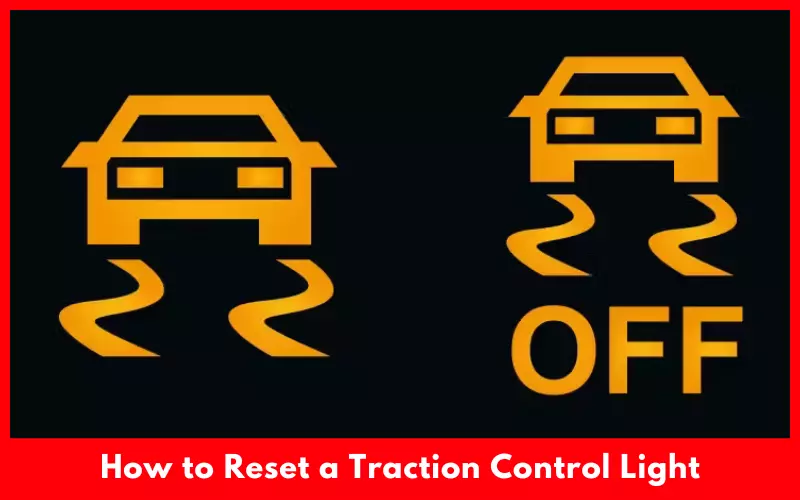
Connect the Scanning Tool
Find your car’s DLC port to connect the OBD2 tool whose location varies from car to car. You should find it under your car’s steering wheel’s left side. Peel off the dashboard’s panel to get access to the port. Once done, plug the scanner into the port.

Reset the Dashboard’s Light
Turn on the scanner tool and enter your car’s model or apply the auto scan feature to search your car automatically. Then select the control unit and find the TCS system from various options and select the reset code option. This should reset the TCS system and deactivate the warning light.
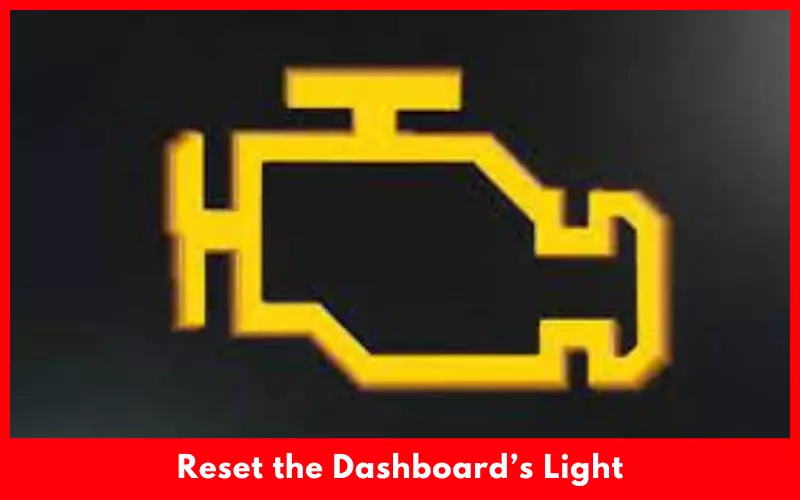
The Common Causes of Traction Control Lights Staying on
Though bad alignment can cause the traction control light to come on, it’s not the only reason. If you’ve already done everything with the car’s alignment and wheel and the warning light is still on, focus on these potential reasons:
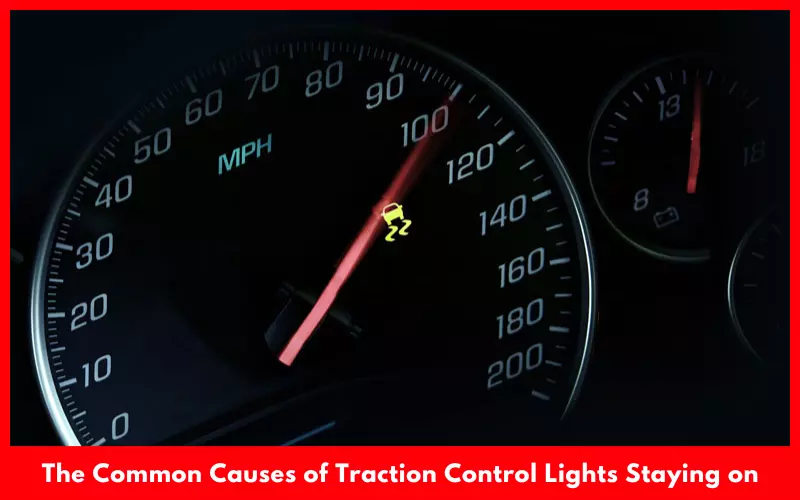
Faulty Wheel Speed Sensor
If your car has a proper alignment, the next possible cause of the TCS light is a damaged wheel speed sensor. This sensor works with the engine control unit and TCS and monitors the wheel’s rotation speed that it sends to the TCS. If the sensor gets damaged and can’t send the signal, your vehicle will lose traction. It can activate the TCS warning light.
Defective Steering Angle Sensor
This sensor measures the position and returning rate of a steering wheel and is placed close to the steering column. A faulty wheel speed sensor affects the TCS and wheel’s connection and prevents TCS from computing and processing information properly. Hence the traction control light can come on. It’ll also prevent the system from engaging when your car faces poor road conditions and make driving risky.
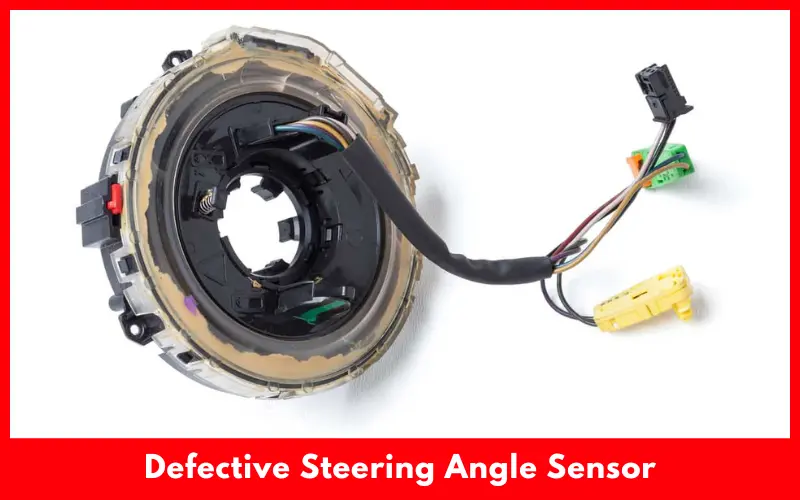
Poor Road Conditions
A car’s TCS can’t handle the too severe road condition and can turn on the traction control light. So if you drive a car often on a snowy or icy road, your car will struggle to maintain traction on it. In this case, avoiding such ground should deactivate the traction control light on your car’s dashboard. You can also install winter tires as these are more suitable for icy roads.
Bad Steering Rack
A steering rack is a crucial part of power steering that remains connected to the steering wheel. It receives high-pressure hydraulic fluid and ensures a smooth and easy turn of the steering wheel. If it gets damaged, you’ll struggle to steer the vehicle, particularly on uneven roads. It can trigger the traction control light.

Manual Override Function
The modern vehicle comes with a switch to switch on or off the TCS system. This system can be accidentally turned off during changing the car’s setting or clearing the vehicle which can activate the traction control light. If so, simply turn on the switch and the warning light should disappear.
Does Traction Control Light Reduce Car’s Speed?
The traction control light system is designed in a way that causes loss of traction when turned on. So your car can experience 25% reduced throttle due to loss of traction at the wheels. The manufacturer designed the TCS system in this way to protect the car’s brake pad, rotor, and caliper which can be damaged due to the wheel’s high-speed rotation.

However, one thing to remember is that loss of power can cause you to struggle to control the vehicle in certain situations. But if you can keep the RPMs up even with the tire’s losing traction, you can get better traction.
FAQs
Why did my traction control and check engine light come on?
If your car activates the TCS and checks the engine light at a time, damaged traction control system and road conditions can be responsible. Low tire pressure, damaged pedal sensor, or faulty wheel speed sensor can also trigger those warning lights. Unlike the fussy air filter or loose gas cap, noticing both lights is a serious concern that should be addressed immediately.
Can bad alignment cause StabiliTrak?
Yes, bad alignment can cause stabiliTrak and trigger the warning light. However other things like defective steering angle sensors damaged faulty speed sensors or icy road conditions can also cause this problem. Hence you may struggle to drive in a straight line and make the sharp turn.
Can bad alignment cause the ABS light to come on?
The wheel speed sensor is attached to the bearing assembly that can wear out and wobbles. It can prevent the sensor from working properly and trigger the ABS light. A broken front spring can also activate the ABS light.
Final words
So, bad alignment can cause traction control light to come on however it isn’t the only reason. If you notice a TCS light on the dashboard, look for other bad alignment signs and treat them accordingly if find any.
But if your car’s alignment is okay, focus on the other causes that can trigger the TCS light. Before bringing the car to an auto repair shop, try to reset the TCS and reboot the vehicle as it can fix the issue and save the repair cost.


Great Article! I recently had a similar issue with my car’s traction control light coming on, and I was wondering if it could be due to bad alignment. It’s good to know that there are possible causes other than just the tires themselves. Thanks for sharing!